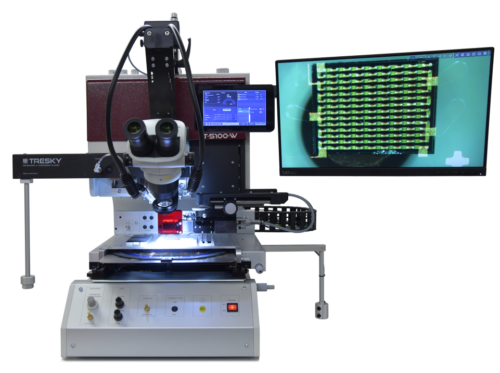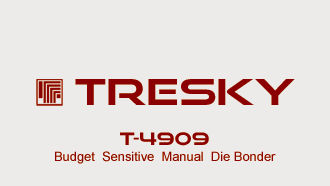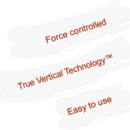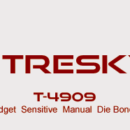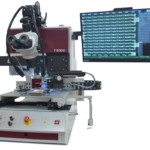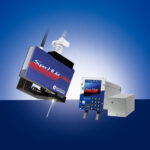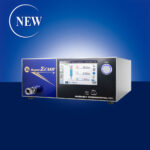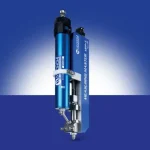XY- Movement (placement stage): 220mm x 220mm (manual)
Z- Movement: 120mm (manual)
Spindle Rotation: 360° (unlimited)
Bond Force: 20g – 1000g
Max PC Boards-/Substrate Size : 400mm x 280mm
Placement accuracy: ±10µm; ±1µm (process and option depending)
Optical Resolution (Flip-Chip Optic 1x Option: 1.25µm
Optical Resolution (Flip-Chip Optic 2x Option: 0.625µm
Dimensions: 1155mm x 790mm x 728mm
Weight: 90kg
Voltage: 110V / 220V
FLIP-CHIPRFIDCOPPER PILLAR BUMPSTHERMOSONIC FLIP-CHIP BONDING
FLIP-CHIP
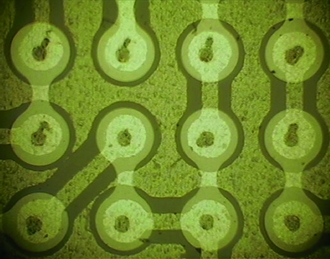
Microelectronic assembly is the direct electrical connection of face-down (hence, “flipped”) electronic components onto substrates, circuit boards, or carriers, by means of conductive bumps on the chip bond pads. In contrast, wire bonding, the older technology which flip chip is replacing, uses face-up chips with a wire connection to each pad. Tresky’s modular die bonding equipment with the most common Flip-Chip option, based on a beam splitter vision system, allows high accuracy placement by one ore multiple points.
RFID

Most RFID (Radio-frequency identification) tags contain at least two parts. One is an integrated circuit for storing and processing information, modulating and demodulating a (RF) signal, and other specialized functions. The second is an antenna for receiving and transmitting the signal. Tresky’s modular die bonding equipment delivers, once more, optimal perfomance in R&D and pre-production assembly as e.g.: Bonding of a Flip-Chip to Antenna.
BONDING OF DEVICES WITH COPPER PILLAR BUMPS

Flip chip technology is keeping pace with the increasing connection density of the ICs and is capable of transferring semiconductor performance to the printed circuit board. The pitch is growing smaller, which means flip chip technology with solder bumps will unavoidably run up against its technical limitations. The reason for this is the spherical geometry of the bumps. The solution to this problem is copper pillars. In this contact technology for flip chip assembly, special cylindrical copper connections function with a solder deposit instead of the usual solder ball bumps to form the connecting element between semiconductor and substrate. The result: improved reliability and enhanced electrical and thermal connection characteristics, greater connection density with narrow pitching and RoHS conformity.
THERMOSONIC FLIP-CHIP BONDING

Thermosonic flip-chip bonding is an advanced, solderless technology for area-array connections. The approach is used to join ICs with gold bumps, Figure 1, to gold plated pads on substrate. It is a simple, clean, and dry assembly process using a bonding mechanism, Figure 2, similar to thermo-compression bonding, but with lower bonding pressure and temperature due to the introduction of ultrasonic energy. The thermosonic process was mainly used for wire bonding but has also great advantages for die attach applications. The pure thermocompression welding typically requires interfacial temperatures of the order of >300°C. This temperature can damage packaging materials, laminates and some sensitive chips. The thermosonic process is a combination of thermo- compression and ultrasonic welding that optimizes the best quality of each for the microelectronics usage. Typically, the interface temperature and the bonding force can be much lower; between 100 to 160°C and 20 to 50g/ bump, which avoids above mentioned problems.
Tresky T-5100-W Datasheet 
Tresky Overview 2022 

